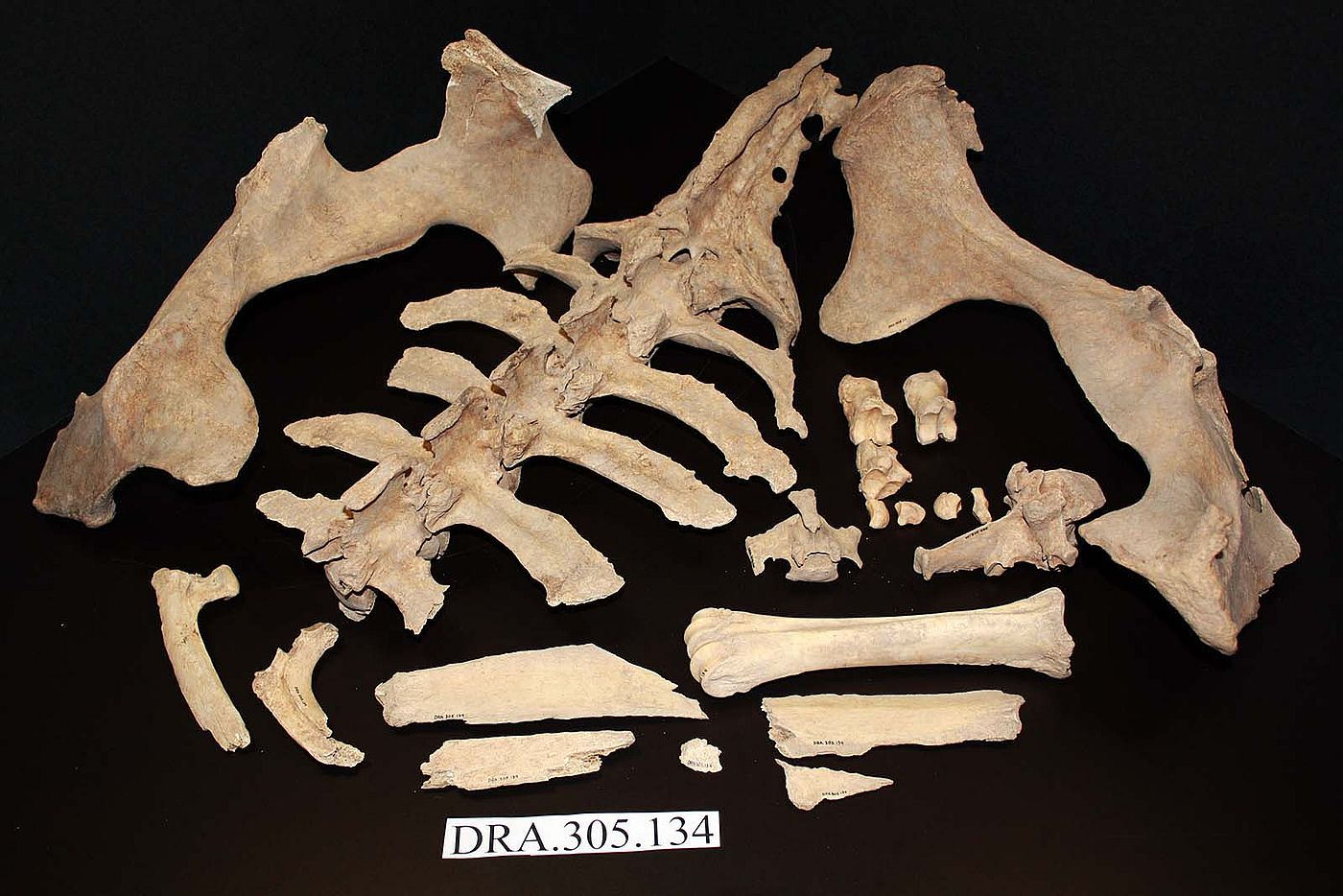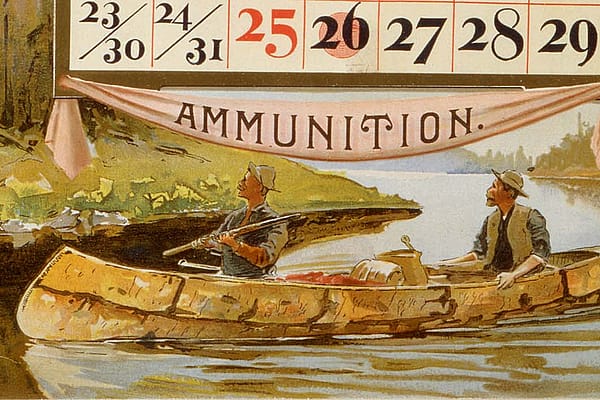
Treasures from Our West: Partial bison skeleton
Originally featured in Points West magazine in Winter 2009
The American bison (Bison bison), also known as buffalo, once ranged throughout the American West and across the Mississippi River into the eastern wood-lands. It is an icon of the American West, representing both the West’s failures and successes. The bison is a survivor—shaped by its environment, including both animal and human predators—and was a critical source of physical sustenance and spiritual strength among Plains Indian peoples.
Local Cody, Wyoming, residents Lawrence and Joyce Hake discovered this partial skeleton—possibly several hundred years old—while they were excavating their lawn during property improvements. They subsequently donated the twenty-six bones to the Buffalo Bill Center of the West.
Under the supervision of former Curatorial Assistant Philip McClinton, volunteer Richard Gruber cleaned the skeleton, and McClinton noticed the butcher marks on vertebrae and pelvic bones indicating this animal once sustained earlier residents of Wyoming’s Bighorn Basin. This specimen documents the presence of bison and bison hunters in what is now the Cody city limits.
We’ve submitted one bone for radio-carbon dating, which should help us pinpoint when this animal lived and died, giving us better understanding of the lives of bison and people who shared this land before us.
Bison skeleton. Gift of Lawrence and Joyce Hake. DRA.305.134
Post 095
Written By
Nancy McClure
Nancy now does Grants & Foundations Relations for the Center of the West's Development Department, but was formerly the Content Producer for the Center's Public Relations Department, where her work included writing and updating website content, publicizing events, copy editing, working with images, and producing the e-newsletter Western Wire. Her current job is seeking and applying for funding from government grants and private foundations. In her spare time, Nancy enjoys photography, reading, flower gardening, and playing the flute.










